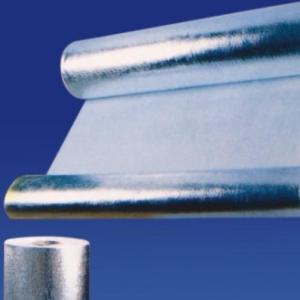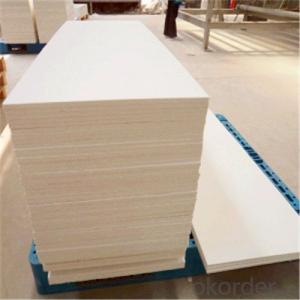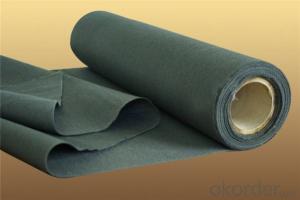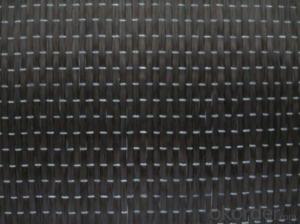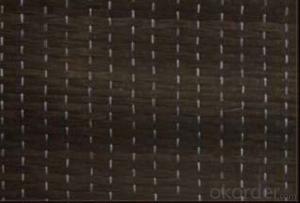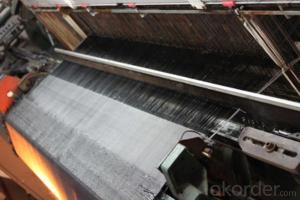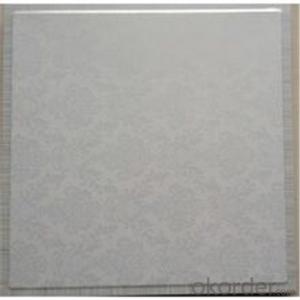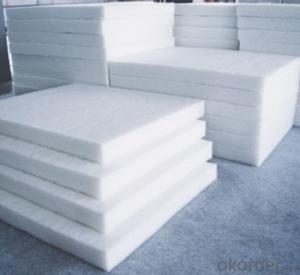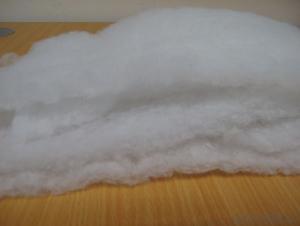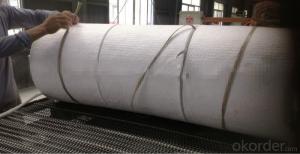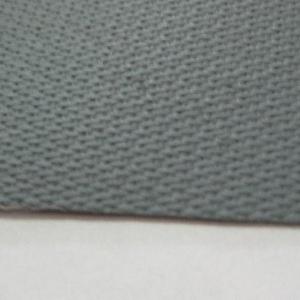E- Glass Fiber Fabric Laminated with Aluminum Foil
- Loading Port:
- China Main Port
- Payment Terms:
- TT or L/C
- Min Order Qty:
- 5t kg
- Supply Capability:
- 2*20FCL Per Month kg/month
OKorder Service Pledge
OKorder Financial Service
You Might Also Like
Basic Info of E- Glass Fiber Fabric Laminated with Aluminum Foil
Dimension/Size
1). Roll width: 48mm, 58mm
2). Roll Length: 28m,
3). Core I. D.: 3"(76mm+/-1)
Packing:Regular Package
Standard:1000m*50m
Origin:China
Product Desciption
E- Glass Fiber Fabric Laminated with Aluminum Foil was made from aluminium Foil combine Fiberglass Mesh Fabric with polyethylene. As a hot stamping foil, It is used to intalled to ceiling by heat, Insulation Batts, Radiant Barriers, Covering Ducts and Pipes.
1. Intended to supply reflection but with lighter weight
Alumium Foil + Fiberglass Mesh Fabric + PE---thermal/heat/themol sensitive adhesive sheeting/facings/finish
2. Construction & Benefits:
Details of structure was list in table.
With fiberglass mesh cloth (25mesh, 31g/sqm ) as lining made this product light but strong enough.
Apply high reflective foil as exposed face, 18mircon thick supply stronger tensile strength.
Application of E- Glass Fiber Fabric Laminated with Aluminum Foil:
Widely used in wall/floor surface reinforcement in the building preventing from wall cracks and ceiling cracks and also barrier moisture / vapor / radiant / light in cover of roof, wall, pipe, air duct, glasswool, glass fiber mat as son on.
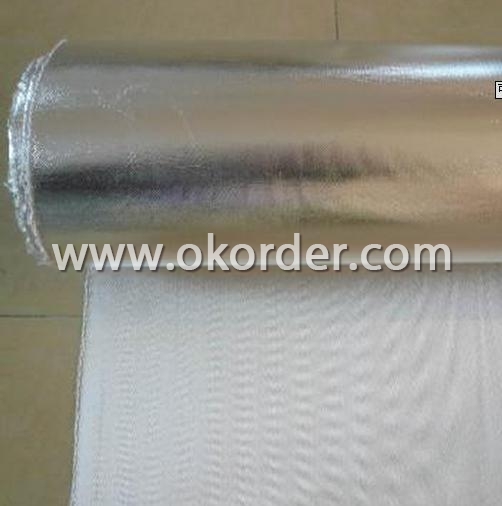
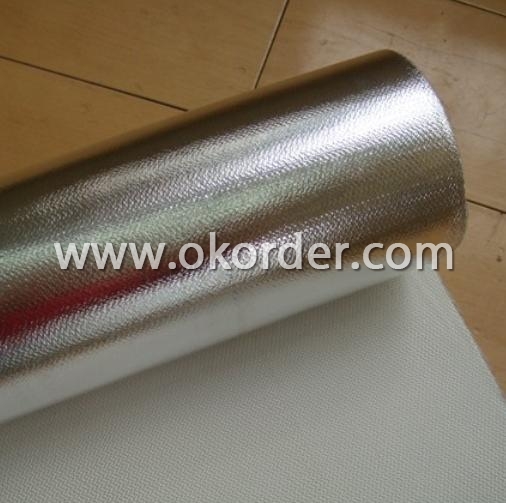
- Q:Are glass fiber textiles resistant to breaking under tension?
- Yes, glass fiber textiles are generally resistant to breaking under tension. Glass fibers are known for their high tensile strength, meaning they can withstand a significant amount of pulling or stretching force before breaking. This makes them highly reliable in applications where strength and durability are required, such as in the manufacturing of reinforcement materials for composites, insulation, and protective clothing. Additionally, the inherent properties of glass fibers, such as their low thermal expansion and resistance to chemicals, further contribute to their ability to resist breaking under tension.
- Q:Can glass fiber textiles be used in reinforcement of alloys?
- Indeed, alloys can benefit from the utilization of glass fiber textiles for reinforcement. Renowned for their exceptional mechanical properties and impressive strength-to-weight ratio, glass fiber textiles prove to be a fitting choice for reinforcing diverse materials, alloys included. By integrating glass fiber textiles into alloys, their mechanical properties, including tensile strength, stiffness, and resistance to deformation, can be significantly enhanced. Consequently, this reinforcement contributes to an overall enhancement in performance and durability of products reliant on alloys. Moreover, the incorporation of glass fiber textiles imparts thermal and electrical insulation properties, thereby further augmenting the functional capabilities of alloys.
- Q:How does glass fiber textile perform in terms of thermal stability?
- Glass fiber textile performs excellently in terms of thermal stability. It is highly resistant to heat, maintaining its structural integrity even at extreme temperatures. This quality makes it ideal for applications where thermal insulation and protection are crucial, such as in fire-resistant clothing, thermal insulation materials, and high-temperature industrial environments.
- Q:Are glass fiber textiles resistant to chemical spills?
- Yes, glass fiber textiles are generally resistant to chemical spills due to their non-reactive nature and high chemical resistance.
- Q:Can glass fiber textiles be used in reinforcement of flax fibers?
- Yes, glass fiber textiles can be used in the reinforcement of flax fibers. This combination of materials is commonly referred to as a hybrid composite. By combining glass fiber textiles with flax fibers, the resulting material can benefit from the strengths and properties of both materials. Flax fibers are known for their high strength-to-weight ratio, natural stiffness, and low environmental impact. They are commonly used in the production of textiles, composites, and various other applications. However, flax fibers have certain limitations, such as low impact resistance and moisture absorption, which can affect their overall performance. On the other hand, glass fibers are widely recognized for their high tensile strength, excellent impact resistance, and resistance to moisture. These properties make them suitable for reinforcing materials and improving their mechanical properties. By incorporating glass fiber textiles into a hybrid composite with flax fibers, the resulting material can possess improved impact resistance, moisture resistance, and overall mechanical strength. The use of glass fiber textiles in the reinforcement of flax fibers can be particularly beneficial in applications that require high strength, durability, and resistance to environmental factors. Furthermore, the combination of these two materials can also contribute to the development of more sustainable and eco-friendly composites, as flax fibers are renewable and have a lower carbon footprint compared to traditional reinforcement materials such as carbon fibers. However, it is important to note that the specific performance of a hybrid composite depends on various factors, including the type and quality of the glass fiber textiles, the processing techniques used, and the desired application requirements. Therefore, thorough testing and optimization are necessary to ensure that the combination of glass fiber textiles and flax fibers achieves the desired mechanical and physical properties for the intended application.
- Q:What is the lifespan of glass fiber textiles?
- The lifespan of glass fiber textiles can vary depending on various factors such as the quality of the material, its intended use, and the level of maintenance. However, on average, glass fiber textiles can last for several decades if properly cared for.
- Q:Can glass fiber textile be used in footwear?
- Glass fiber textile has the ability to be utilized in footwear. This material, which is both durable and lightweight, can offer reinforcement and stability to different areas of footwear. It is frequently employed in the production of shoe soles, midsoles, and shanks in order to enhance their strength and support. In addition, glass fiber textile can be employed in the upper portion of the shoe to provide structure and enhance breathability. Moreover, glass fiber possesses exceptional tensile strength and moisture resistance, rendering it appropriate for use in footwear. In summary, glass fiber textile is a versatile material that can be effectively employed in the manufacturing of footwear.
- Q:Can glass fiber textile be quilted?
- Yes, glass fiber textile can be quilted.
- Q:How do glass fiber textiles affect product cost?
- Glass fiber textiles can have both positive and negative effects on product cost. On one hand, using glass fiber textiles can increase the cost of production compared to using traditional textiles. This is because glass fiber textiles are generally more expensive to manufacture and require specialized machinery and expertise. Additionally, the raw materials used in glass fiber textiles, such as glass fibers and resins, can also be pricey. However, on the other hand, glass fiber textiles can also help reduce long-term costs associated with product maintenance and durability. Glass fiber textiles are known for their high strength and resistance to wear, tear, and degradation. This means that products made with glass fiber textiles tend to have a longer lifespan and require less frequent repairs or replacements. In turn, this can save manufacturers and consumers money in the long run. Furthermore, glass fiber textiles can also contribute to cost savings through their lightweight nature. Compared to other materials, glass fiber textiles are relatively lightweight, which can lead to reduced transportation costs and easier handling during production. This can be particularly beneficial for industries that require large quantities of textiles, such as the automotive or aerospace sectors. Overall, while glass fiber textiles may initially increase product costs, their durability, longevity, and other cost-saving benefits can offset these expenses in the long term. It is important for manufacturers to carefully consider the specific requirements of their products and weigh the potential benefits and drawbacks of using glass fiber textiles before making a decision.
- Q:Are glass fiber textiles resistant to environmental degradation or weathering?
- Glass fiber textiles exhibit a high degree of resistance to environmental degradation and weathering. These textiles are crafted from molten glass that is then spun into thin strands, which are subsequently woven together to form a robust and enduring material. The remarkable resistance of glass fiber textiles to UV radiation, moisture, and chemicals makes them exceptionally suitable for outdoor applications. Unlike other fabric types, they remain unaffected by extended exposure to sunlight, rain, or extreme temperatures, which can lead to deterioration. Given their ability to withstand weathering, glass fiber textiles find widespread use in various industries, including construction, aerospace, automotive, and marine. They are commonly employed in the production of insulation, reinforcements, and composite materials, where their stability and longevity are of utmost importance. Moreover, glass fiber textiles also possess resistance to mold, mildew, and pests, further enhancing their durability and longevity. They maintain their physical properties over time, ensuring that they continue to deliver reliable performance even in harsh environmental conditions. In conclusion, glass fiber textiles are highly resistant to environmental degradation and weathering. Their exceptional durability, stability, and resistance to UV radiation and moisture make them the preferred choice for applications that demand long-lasting and reliable performance.
1. Manufacturer Overview |
|
|---|---|
| Location | Beijing, China |
| Year Established | 1992 |
| Annual Output Value | Above US$ 3 Million |
| Main Markets | North America;Southeast Asia ;Western Europe ;Middle East |
| Company Certifications | ISO 9001:2008 |
2. Manufacturer Certificates |
|
|---|---|
| a) Certification Name | |
| Range | |
| Reference | |
| Validity Period | |
3. Manufacturer Capability |
|
|---|---|
| a)Trade Capacity | |
| Nearest Port | Tianjing |
| Export Percentage | 60% - 70% |
| No.of Employees in Trade Department | 21-50 People |
| Language Spoken: | English; Chinese |
| b)Factory Information | |
| Factory Size: | Above 10,000 square meters |
| No. of Production Lines | Above 8 |
| Contract Manufacturing | |
| Product Price Range | High; Average |
Send your message to us
E- Glass Fiber Fabric Laminated with Aluminum Foil
- Loading Port:
- China Main Port
- Payment Terms:
- TT or L/C
- Min Order Qty:
- 5t kg
- Supply Capability:
- 2*20FCL Per Month kg/month
OKorder Service Pledge
OKorder Financial Service
Similar products
New products
Hot products
Hot Searches
Related keywords
